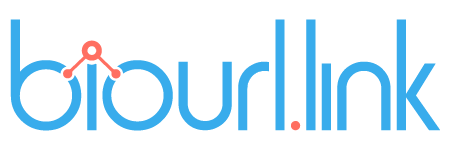
In today's digital age, QR codes have become ubiquitous tools for bridging the gap between physical and digital worlds. These square-shaped patterns of black squares on a white background may seem simple, but they hold immense potential for businesses, organizations, and individuals looking to streamline information sharing and enhance user experience. In this blog, we'll explore the ins and outs of how to generate a QR code for a website, demystifying the process and providing practical tips for leveraging this powerful tool to drive engagement and connectivity.
Understanding QR Codes: What Are They and How Do They Work?
Before diving into the specifics of generating QR codes for websites, let's first understand what QR codes are and how they function. QR, or Quick Response, codes are two-dimensional barcodes that encode information in a matrix of black and white squares. They were originally created in Japan in the 1990s for tracking automotive parts but have since evolved into a versatile tool for a wide range of applications, including marketing, advertising, and digital authentication.
QR codes work by encoding data, such as text, URLs, or contact information, into a pattern of black and white squares. When scanned with a QR code reader or a smartphone camera equipped with QR code scanning capabilities, the encoded information is decoded and displayed to the user. This enables users to quickly access websites, view product information, make payments, and perform various other actions without the need for manual data entry.
Generating a QR Code for a Website: Step-by-Step Guide
Now that we have a basic understanding of QR codes, let's explore how to generate a QR code for a website. The process is relatively straightforward and can be accomplished using a variety of online tools and QR code generators. Here's a step-by-step guide:
Determine the URL: The first step in generating a QR code for a website is to determine the URL or web address that you want the QR code to link to. This could be the homepage of your website, a specific product page, a contact form, or any other web resource you want to direct users to.
Choose a QR Code Generator: There are numerous QR code generators available online, both free and paid. Choose a reputable QR code generator that offers the features and customization options you require. Some popular options include QR Code Monkey, QR Code Generator, and QR Stuff.
Input the URL: Once you've selected a QR code generator, input the URL of your website into the designated field. Some QR code generators may also allow you to customize the QR code with additional options such as color, size, and error correction level.
Generate the QR Code: After inputting the URL, click the "Generate" or "Create QR Code" button to generate your QR code. The QR code will be generated instantly, and you'll typically have the option to download the QR code image file to your computer or share it directly via email or social media.
Test the QR Code: Before deploying the QR code, it's essential to test it to ensure that it functions correctly. Use a QR code scanner app on your smartphone or a QR code reader software on your computer to scan the QR code and verify that it directs users to the intended website or web page.
Best Practices for Using QR Codes for Websites
While QR codes offer a convenient way to drive traffic to websites and engage users, it's essential to follow best practices to maximize their effectiveness. Here are some tips for using QR codes for websites:
Provide Clear Instructions: Include clear instructions or calls to action alongside the QR code, instructing users on how to scan the code and what to expect when they do.
Optimize for Mobile: Ensure that your website is mobile-friendly and optimized for viewing on smartphones and tablets, as most users will be scanning QR codes with their mobile devices.
Monitor Performance: Track the performance of your QR codes using analytics tools to measure scan rates, engagement metrics, and conversion rates. Use this data to refine your QR code campaigns and optimize their effectiveness.
Use Dynamic QR Codes: Consider using dynamic QR codes that allow you to update the encoded information remotely. This enables you to make changes to the linked website or URL without having to regenerate the QR code.
Test Different Designs: Experiment with different QR code designs, colors, and styles to make your QR codes more visually appealing and recognizable. However, ensure that the QR code remains scannable and functional regardless of design changes.
In Conclusion
In conclusion, QR codes are powerful tools for bridging the physical and digital worlds, offering a convenient and efficient way to share information and engage users. By following the steps outlined in this blog and adhering to best practices for QR code usage, you can generate QR codes for your website effectively and leverage them to drive traffic, enhance user experience, and achieve your marketing and communication goals in the digital age.
To generate a QR code click here



